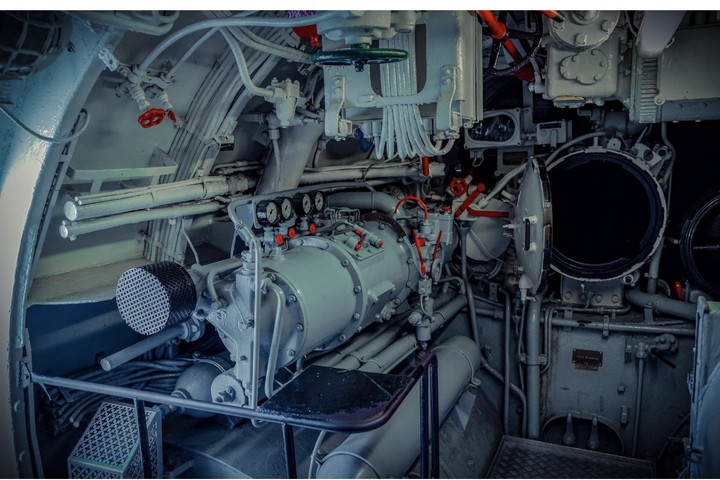
Any future Mars mission will need to both recycle and jettison waste. This is a major problem and consequently HeroX has launched a NASA challenge to seek ideas from the crowd. The Waste to Base Materials Challenge looks at onboard recycling while the NASA Waste Jettison Mechanism Challenge concerns ejection of non-recyclable waste from a spacecraft.
However, spacecraft aren’t the only place where crew are crammed into a small area for long periods of time and sealed off from the outside world with airlocks. Submarines have been around for over a hundred years, and there may be some lessons to learn with regards to waste recycling and disposal. There are certainly warnings about what can happen when it goes wrong! The aim of this blog is to inspire innovative ideas that may have relevance to this NASA challenge.
Sewage in a Sub
Sewage is a major issue on submarines. Like spacecraft, submarines need to handle crew biological waste. However, submarines don’t need to conserve water as they create fresh water from the ocean around them. But ejecting sewage presents major risk, and therefore submarines try to minimize the volume and mass of sewage being jettisoned. Conversely, retaining sewage on the boat presents a hazard to the crew. This balancing act is very similar to the one facing crewed space flight. Solvers may wish to investigate how different submarine forces around the world address this issue.
Poo, Plastic and Packaging for Power
Another option may be to look at sewage as a fuel source. It is already used to make ‘crude oil’. When coupled with the various waste plastics, foams, fabrics and packaging that are generated during crewed missions, they can serve as a hydrocarbon rich base from which numerous products could be created. A suitable oxidizer would need to be considered if fuel is the goal, but there is quite a lot of oxygen locked up in waste.
Onboard Recycling
In addition to sewage, there are other waste products generated during long duration submarine missions. Modern submarines have a range of recycling capabilities, for example air, water and metals, but the state of the art is probably on cruise ships. These ships have less of a volume limit than submarines but there are some sophisticated technologies of note such as pyrolysis plants. Heat, steam and biological treatments based on municipal systems are also mature and ready for miniaturization so they can be fitted to small maritime platforms. Some modern Western navies, such as the UK’s Royal Navy, have already developed larger systems for warships. However, it should be noted that small spacecraft have some extreme limitations when it comes to oxygen and energy availability, not to mention crew and vehicle safety.
Jettison of Non-Recyclable Material
No matter how good a recycling technology is, there will always be some waste material left over. Submarines have shredders and trash compactors to reduce the volume of this waste to the smallest possible amounts. This compacted residue is then placed in metal containers and ejected through an airlock where it sinks to the bottom of the ocean in a neat package that will not disperse. The clever bit is that the metal containers are made on the submarine from sheet metal. While stowing metal sheet for such a use on a Mars mission would be impracticable due to weight constraints, there may be scope to make a trash container out of the waste itself. For example, fecal and other biological matter could be ‘baked’ into a solid carbon container for the remaining waste. Or perhaps a resin or binder could be added to certain types of shredded waste to mold it into a solid container. Whatever technique is used to manufacture waste containers, the ‘shred-compact-contain-jettison’ model used on submarines could be worth considering for future Mars missions.
What next?
A mission to Mars will likely need multiple approaches to managing waste. Submarines could be a source of ideas for solutions, and other Earth-based waste handling and recycling methods may offer useful inspiration. All societies on Earth produce waste, and some have truly innovative recycling methods that may be just what is required for future crewed space missions. Wherever you seek inspiration, you don’t need to have any specialist knowledge to enter these two challenges, so please have a go and submit your ideas. Good Luck!








